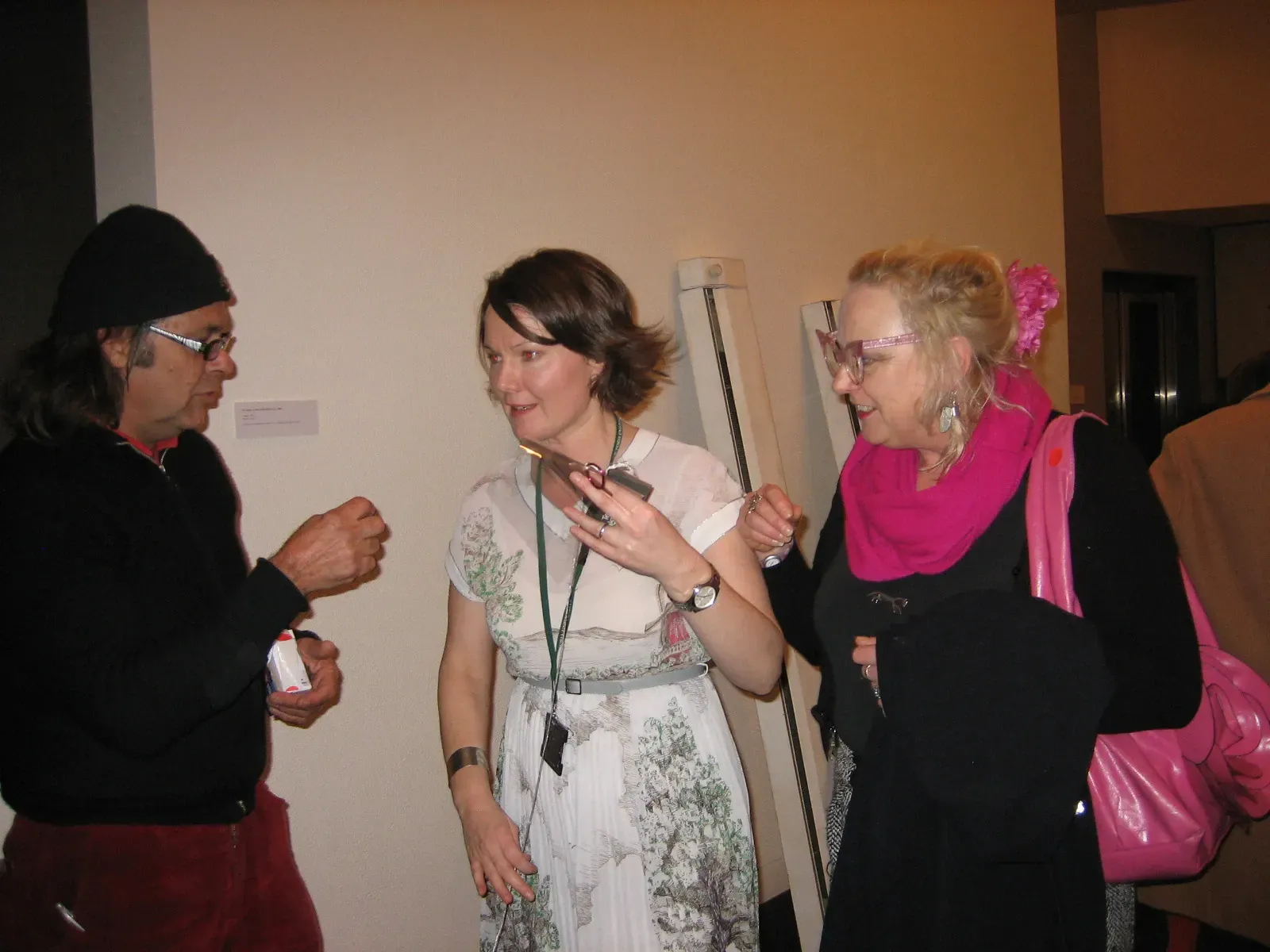b'art Homme pulls strings art act at the Adam

Curators turf out subversive act
Artist and filmmaker Barry Thomas was not part of the show, but arrived at the opening with a long piece of string attached to a photograph of a homeless man named Chris, with a message inviting the viewer to follow the string outside to meet the man.
The gallery was hosting the opening of Peripheral Relations: Marcel Duchamp and New Zealand Art 1960-2011, based on the PhD work of Marcus Moore and showing Duchamp works alongside 29 New Zealand artists he influenced.
“Chris wasn’t actually there. He was too embarrassed, but he was very happy to be involved,” says Thomas. Outside the gallery, at the other end of the string was a statement describing Chris’ life with a phone number to call to help. “I was fully expecting my phone to get filled up with rich people wanting to help.”
Instead, while interacting with gallery-goer Kristelle Plimmer about his piece, Thomas was asked to move it to the side by a gallery representative, who also removed the picture of Chris.
The gallery did not respond before deadline.
Plimmer says all were polite and not disruptive, but the piece came apart before she was able to follow it to the finale.
“He was subverting the gallery, but that’s in the Duchampian tradition,” says Plimmer, an artist and former professor at Whitireia. If she’d been exhibiting that night, she wouldn’t have been offended by his act, which didn’t damage other works or disrupt their viewing.
“I personally don’t see a lot of harm in it, although galleries might find it disruptive,” she says. “Art is not just about being in the white space. It’s very easy for people to see the gallery as a sacred space, as a temple of art, and he’s standing up in church and saying, ‘Hang on a sec. Jesus hung out with the poor people.’ It’s sad they took it away but it’s their right.”
Thomas’ past work includes The Cabbage Patch, subversively planted in a vacant lot at the corner of Manners and Willis in 1978. He also founded rADz, Radical Art Advertisements that aired on television during the late 1990s.
He says he was considered for the Duchamp exhibition, but not included, and his piece was a comment “on the process of having curatorial power. It’s not so much getting in the show but to challenge an individual’s right to express him or herself and the great power of the academy to include or exclude people,” he says.“I didn’t want to throw it in their faces, just a gentle reminder that the art world and poverty could have connections.”

